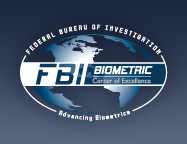What We Do
Our Background
Integrated Automated Fingerprint Identification System (IAFIS)
For nearly 100 years, inked fingerprint cards have been accepted as the standard means for recording and storing fingerprint identification data. Over that period, the content, format, and quality of fingerprint cards have been revised and refined. Fingerprint cards have evolved into an accepted international standard for the exchange of fingerprint, identification, and arrest data between criminal and non-criminal justice agencies. Historically fingerprint cards were physically transported and processed; therefore, substantial delays were recognized in the identification cycle.
*You must have Adobe Reader to view a PDF file.

The IAFIS was developed to support the paperless submission of fingerprint information. This improved the speed and accuracy of the fingerprint identification process and eliminated the need for contributing agencies to create and transport paper fingerprint cards to the FBI. In support of the development of the IAFIS and in accordance with the recommendations of the National Crime Information Center Advisory Policy Board (APB), currently known as the Criminal Justice Information Services APB Identification Services Subcommittee, the FBI has developed a standard for electronically encoding and transmitting fingerprint images, identification, and arrest data. For more information, go to http://www.fbi.gov/hq/cjisd/iafis.htm
American National Standards Institute/National Institute of Standards and Technology (ANSI/NIST)
The ANSI/NIST Information Technology Laboratory (ANSI/NIST-ITL) was established in collaboration with the ANSI, NIST, and fingerprint identification community. The ANSI/NIST-ITL 1-2011 standard, titled the “Data Format for the Interchange of Fingerprint, Facial, and Other Biometric Information,” defines the content, format, and units of measurement for the exchange of information that may be used in the biometric identification of a subject. The ANSI standard was intended for use in the interchange among criminal justice administrations or organizations that use an automated fingerprint identification system (AFIS) and to provide a common interface for other AFIS and related systems worldwide. Later revisions to this standard have added information regarding additional biometric modes of identification such as palm, facial, and iris recognition. For more information, go to http://www.ansi.org/about_ansi/overview/overview.aspx?menuid=1
Extended Feature Set (EFS)
The EFS is a quantifiable, standard means of characterizing the information content of a fingerprint, or other friction ridge image, for use in both latent print examiner’s casework and when searching Automated Fingerprint Identification Systems (AFIS). EFS is part of the ANSI/NIST-ITL 1-2011 standard, which is the basis for biometric and forensic standards used around the world. EFS makes latent AFIS interoperability possible. EFS defines the features used in vendor-neutral latent fingerprint/palmprint AFIS searches, enables cross-jurisdictional searches that would not otherwise be practical, and provides information to allow examiners to manage their time effectively by trading off between examiner markup time and increased accuracy. EFS is based on broad consensus, does not require specialized instructions for use with a specific vendor’s system, and can be processed by all major vendors. The FBI's Next Generation Identification (NGI) system relies on EFS in its EBTS specification. For more information on latent AFIS interoperability, go to http://www.nist.gov/oles/afis_interoperability.cfm.
Electronic Biometric Transmission Specification (EBTS)
While the aforementioned ANSI standard provides the guidelines for the exchange of biometric information between various federal, state, local, tribal, and international systems, the EBTS defines requirements that agencies must adhere to when electronically communicating with the FBI's IAFIS. The FBI EBTS and its future revisions will inherit the basic requirements for logical records set forth in the ANSI standard. However, the FBI-specific requirements for the ANSI/NIST implementation of Logical Records Type 2, Type 7, Type 9, Type 10, Type 13, Type 14, Type 15, and other record types are contained in the EBTS.
Type 2 record fields are user defined and provide descriptive data associated with a particular electronic transaction as defined by ANSI/NIST-ITL 1-2011. The FBI has defined record field specifications associated with IAFIS transactions. Other agencies, states, and individual users have expressed a need to define their own Type 2 information particular to their own systems. The FBI, as the executive agent of the North America Domain, has allocated Type 2 field number ranges to these agencies.



